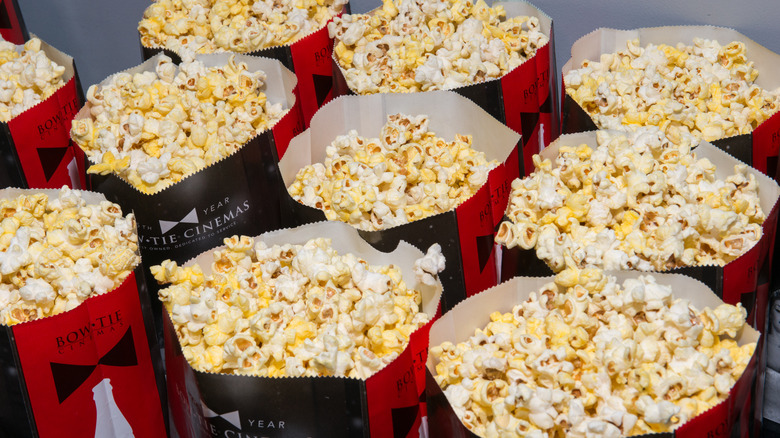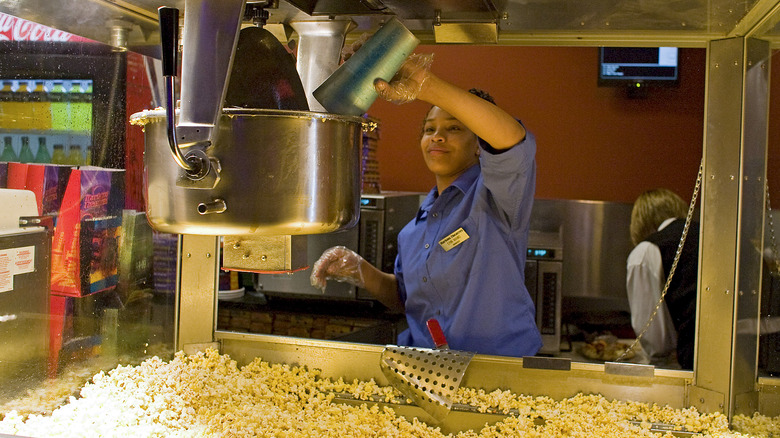The Real Reason You Eat Popcorn At The Movie Theater
Movie theater popcorn is a hot, buttery treat served in a bucket big enough to take up your whole lap. Snacking on the nostalgic finger-food while watching the big screen has become a long-standing tradition. Popcorn is a staple of the movie theater food pyramid, right up there with Goobers and Reese's Pieces. But the history behind this bagged snack didn't begin with your local theater, rather, its roots go as far back as 5000 B.C., with the Pre-Columbian indigenous people (via PBS).
PBS reports that the Pre-Columbian people cultivated a unique form of maize that could only be consumed if the incredibly hard kernels were heated, allowing the soft interior to burst out. Furthermore, French explorers describe the native Iroquois tribe popping hard corn kernels in pottery jars filled with heated sand (via History). As Native Americans and colonial culture intermixed, popcorn slowly began to establish a foothold in American culture. The moment that shifted popcorn from a quaint treat to a nationwide snack occurred at the beginning of the 20th century. Charles Cretor introduced a steam-powered popcorn and peanut roaster which proved how easy popcorn was to make and, more importantly, to sell (via Wyandot Popcorn Museum). But, despite the growing "pop-ularity" of popcorn at the time, the snack still didn't take off in theaters. In fact, it was explicitly banned.
Theaters didn't have popcorn until the Great Depression
According to Andrew Smith, author of "Popped Culture: A Social History of Popcorn," movie theaters wanted to emulate the classical theaters before them with lush carpets, clean parlors, and an elegance that would lose its glamour if snack foods were introduced. The "highbrows" of the 19th century were opposed to enjoying the theater with loud noises, such as crunching and chewing (via Smithsonian). Although "talkies" replaced the silent films, which muffled the sound of people eating, theaters were still hesitant to adopt the idea of a concession stand.
According to PBS, it was the Great Depression that pushed popcorn into movies theaters. People flocked to the silver screen to escape the harsh economic problems that surrounded them, and theater owners began selling popcorn, as it was considered an affordable luxury.
As the profits from the popcorn began increasing, theater owners realized the benefits were two-fold. Not only could they bring in extra income, but were also staying afloat above their competitors. While there were some theaters still on the fence, they quickly changed their tune when they noticed how much money their competitors were raking in (per Smithsonian).
Hamid Hashemi, CEO of the luxury iPic Theaters, shares with the Smithsonian that the warm, salty snack is here to stay, stating, "Popcorn is the cheapest thing you can make, and to a lot of people it has that ritualistic experience."

